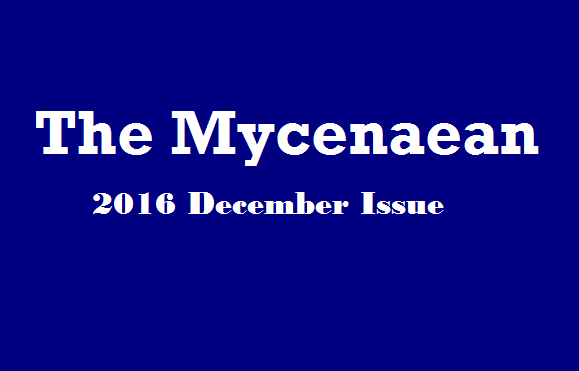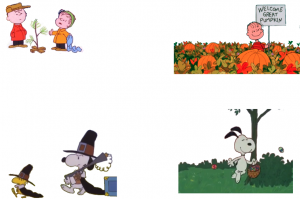2016 marked sixty-six years since the first Charles Shultz’s Peanuts strips ran in American newspapers, and sixteen years since new strips were inked. One of America’s top cultural icons, Peanuts embodied the innocence of an era. When Peanuts launched, the suburbs were a new concept, and the Peanuts characters were the first suburbanites.
As prominent in our culture as Schultz’s comic strips were, the animated movies created over the half decade of the franchise’s relevance may be its lasting legacy.
The most popular of these movies by far was A Charlie Brown Christmas. On the night it premiered, 15 million television sets were tuned in, second place to a serial western a few channels away.
However, in the coming days, newspapers would exude praise for the special and proclaim it an instant classic. Sixty years later, across America, the show is rebroadcast every year and remains an annual tradition, even to the grandchildren of the people who were children when it first aired. It was aired in 1965 — coincidentally when Schultz is considered to have peaked as a humorist. Since then, over 40 of these specials have since been produced.
Today, the legacy of Peanuts remains its status as something distinctly American. The strip, it’s characters, and it’s associate forms of media were and will probably remain the most American story to have ever been told. Despite the end of the strip, it remains a cultural force– The CGI Peanuts Movie released last year was a big success.
The holidays are coming to a head, and The Mycenaean would like to take a look at some of our favorite Peanuts specials.
Praise for Charlie Brown:
“It became part of everybody’s Christmas holidays.”
-Lee Mendelson, producer
“Charlie Brown is not used to winning, so we thank you.”
-Schultz winning an Emmy for A Charlie Brown Christmas, 1966
“Natural-born loser Charlie Brown finally turned up a real winner last night.”
-Lawrence Laurent’s review, Washington Post
“You guys are crazy. This is going to run for 100 years.”
–An animator for A Charlie Brown Christmas, in response to worry about the special during development
A Charlie Brown Christmas (1965)
What can be written about a half hour cartoon that seemed to change everything? Charlie Brown’s fervent derision of commercialism resonates with Americans today. Ironic, considering the special was first and foremost a financial endeavor on the part of CBS– an ad for Coke had a few seconds after the title card. Indeed, the themes central to A Charlie Brown Christmas would make up the core of any “proper Christmas movie” for the next half century.
There’s a lot to like about A Charlie Brown Christmas, and a purist might consider it a cut above the rest. The soundtrack, which was considered strange and ill-fitting before release due to the fact it combined choir music, jazz and Christmas music, was eventually pulled into the Library of Congress. The way Charlie Brown reacts to the little town he lives in is simply great writing. A Charlie Brown Christmas became the template for the Peanuts specials, though it remains by far the most memorable.
It’s the Great Pumpkin, Charlie Brown! (1966)
Following the success of the first special, CBS greenlighted a second to be aired on Halloween of 1966: It’s the Great Pumpkin, Charlie Brown! This new special manages to be both a successful departure from the themes of the first special, while retaining most of its likable qualities. The soundtrack, again by Vince Guaraldi, was similar to the first special, albeit not as soft or calm.
Although Linus is the real star of the show, Charlie Brown is still downtrodden and helpless. Who can forget the classic line “I got a rock”? The writers weren’t afraid to embark on ideas that might be a bit odd to audiences. A segment several minutes long of Snoopy pretending to be the Red Baron became one of the most iconic parts of the Peanuts franchise. The central motif of the special, childhood innocence, is perfect for the characters.
It’s the Great Pumpkin, Charlie Brown is the clear runner up.
A Charlie Brown Thanksgiving (1974)
A Charlie Brown Thanksgiving is anticlimactic, yet charming. It takes a much more upbeat tone than the other specials which one could argue the nation needed badly in 1973. The music is again provided by Vince Guaraldi. Nothing too terrible happens to Charlie Brown. In fact, the whole special is rather uneventful.
It’s essentially Thanksgiving dinner with Charlie Brown a select group of minor characters. After everything he’s been through, doesn’t he deserve a break?
The lack of meaningful conflict or development between Charlie Brown and his world is a clear case of the writers worrying about satisfying audiences first, and their artistic ambitions later. This low-risk storytelling can be thought of as a pro, instead of a con.
Maybe Thanksgiving isn’t the perfect holiday to give a lecture about the true meaning of holidays to TV audiences– it’s a bit too festive. A Charlie Brown Thanksgiving is feel-good, upbeat television, but nobody can seriously pan it for that.
It’s the Easter beagle, Charlie Brown! (1975)
Nearly 10 years after A Charlie Brown Christmas, advances an animation tech and high faith in Charlie Brown’s ability to pull an audience enabled CBS to create a program which was much more visually dynamic. Characters, who once marched lockstep like puppets along a flat backdrops, are now animated fluidly, and the artists take great care to make the animations visually appealing.
It was the first Charlie Brown special to heavily feature rock music in the form of organs, tambourines and electric guitars, quite unlike the music Vince Guaraldi had written for the specials up until then.
The central theme of childhood innocence and belief is, unapologetically, a rehash of The Great Pumpkin, but it does contain a twist. However, over ten years, the vision of the writers changed. Charlie Brown is essentially a supporting character, and Snoopy is the star of the show. Long segments are devoted to action oriented gags. It’s the Easter Beagle, Charlie Brown lacks some of what made the previous specials memorable, but it does well by itself.


Leave a Reply